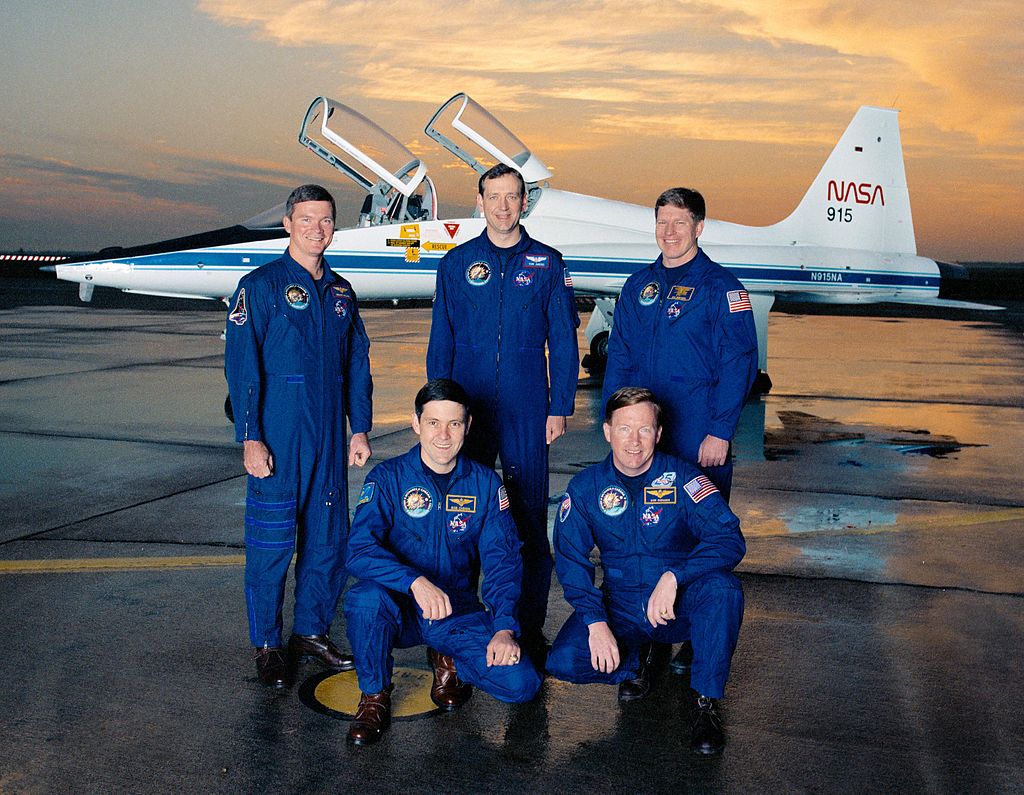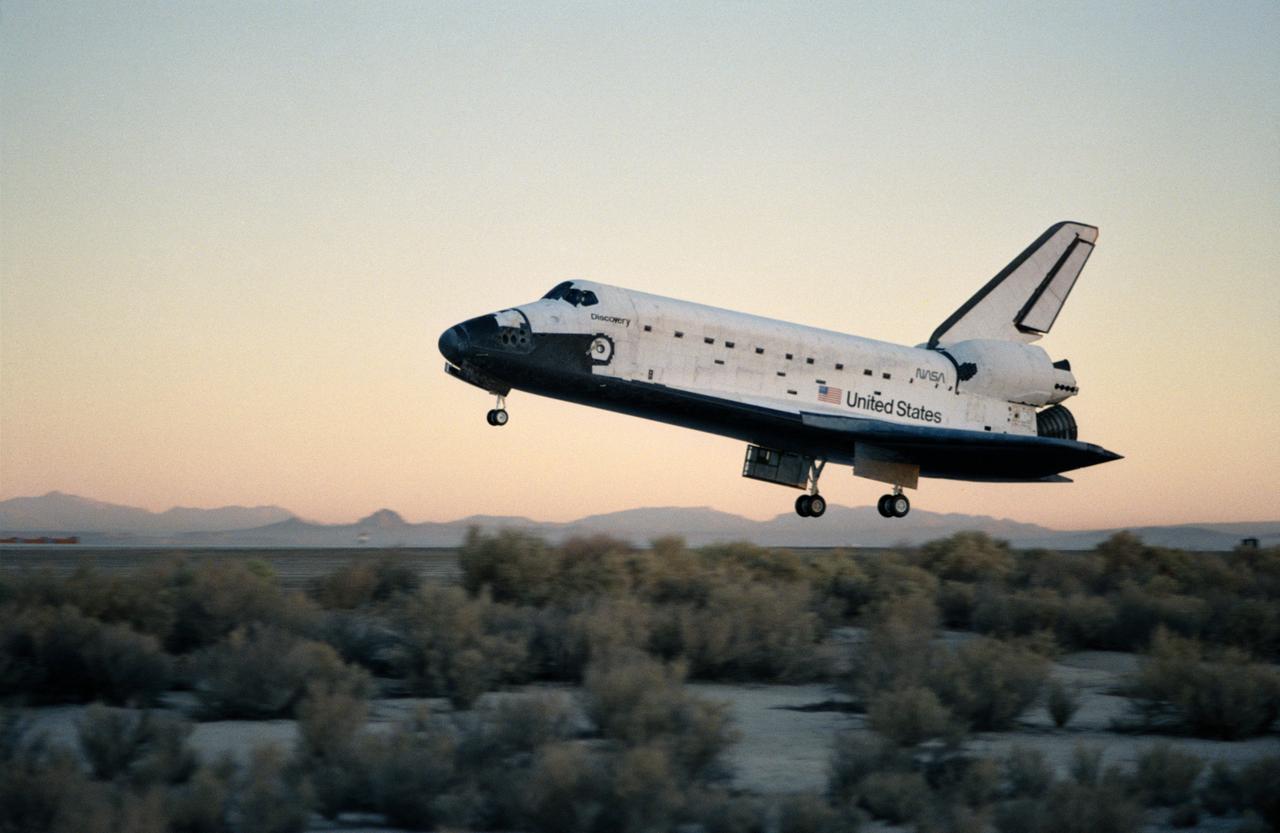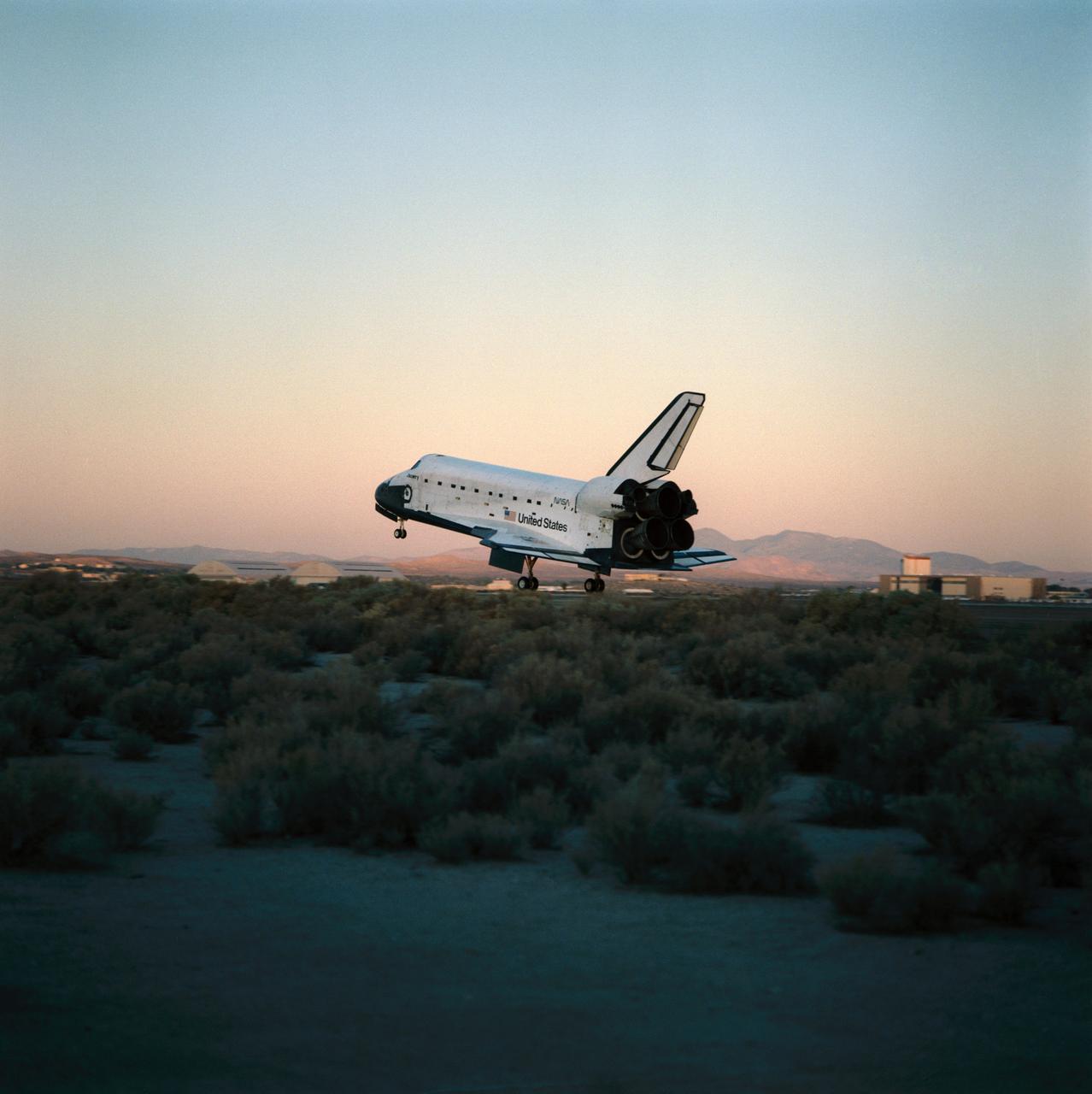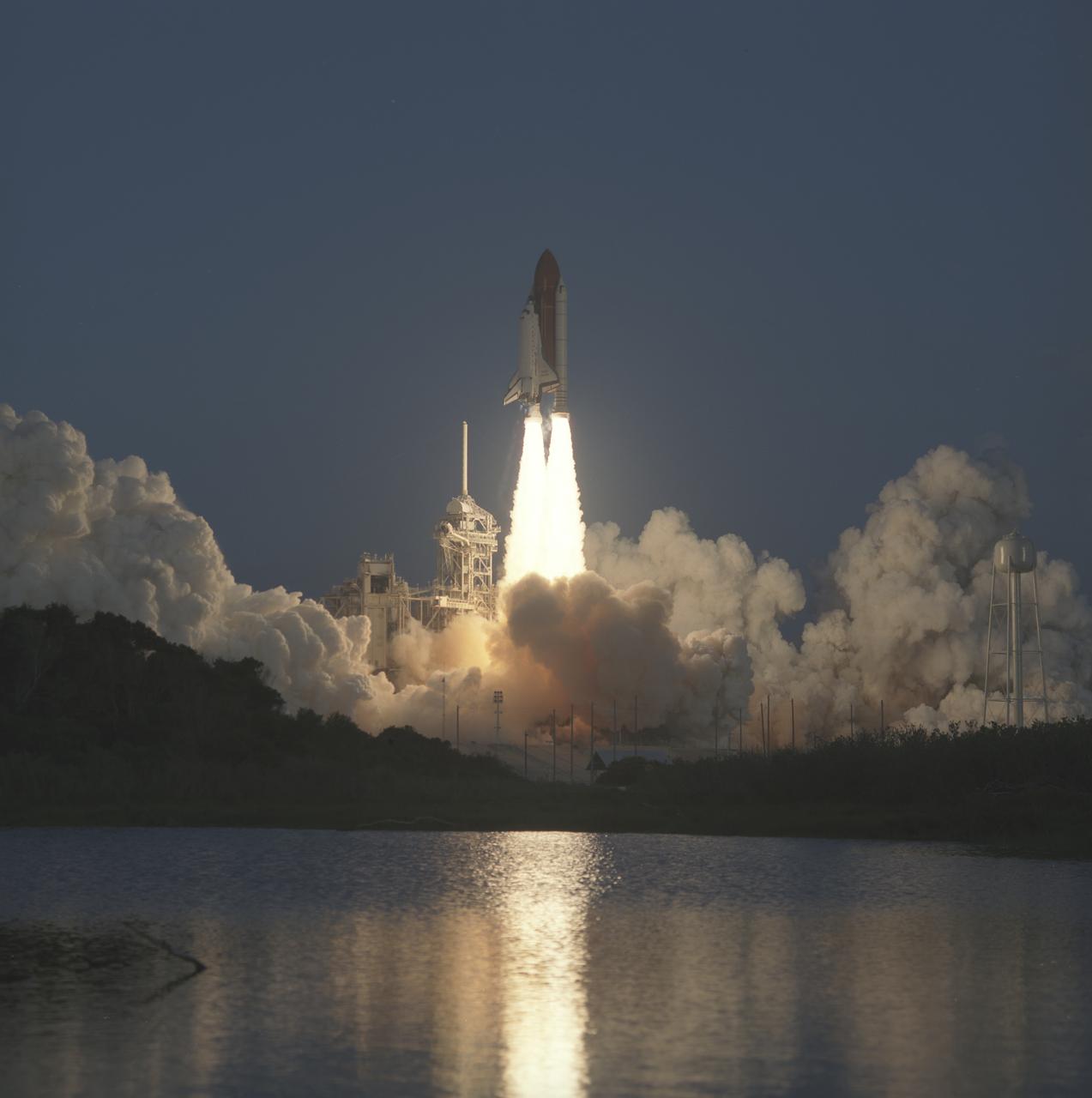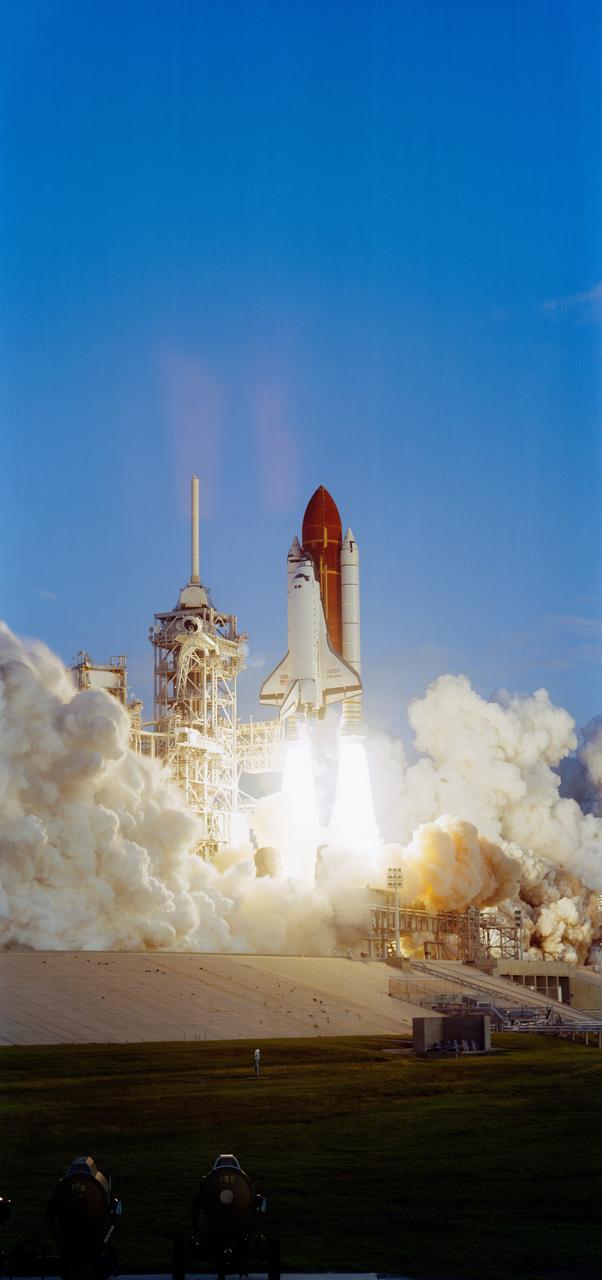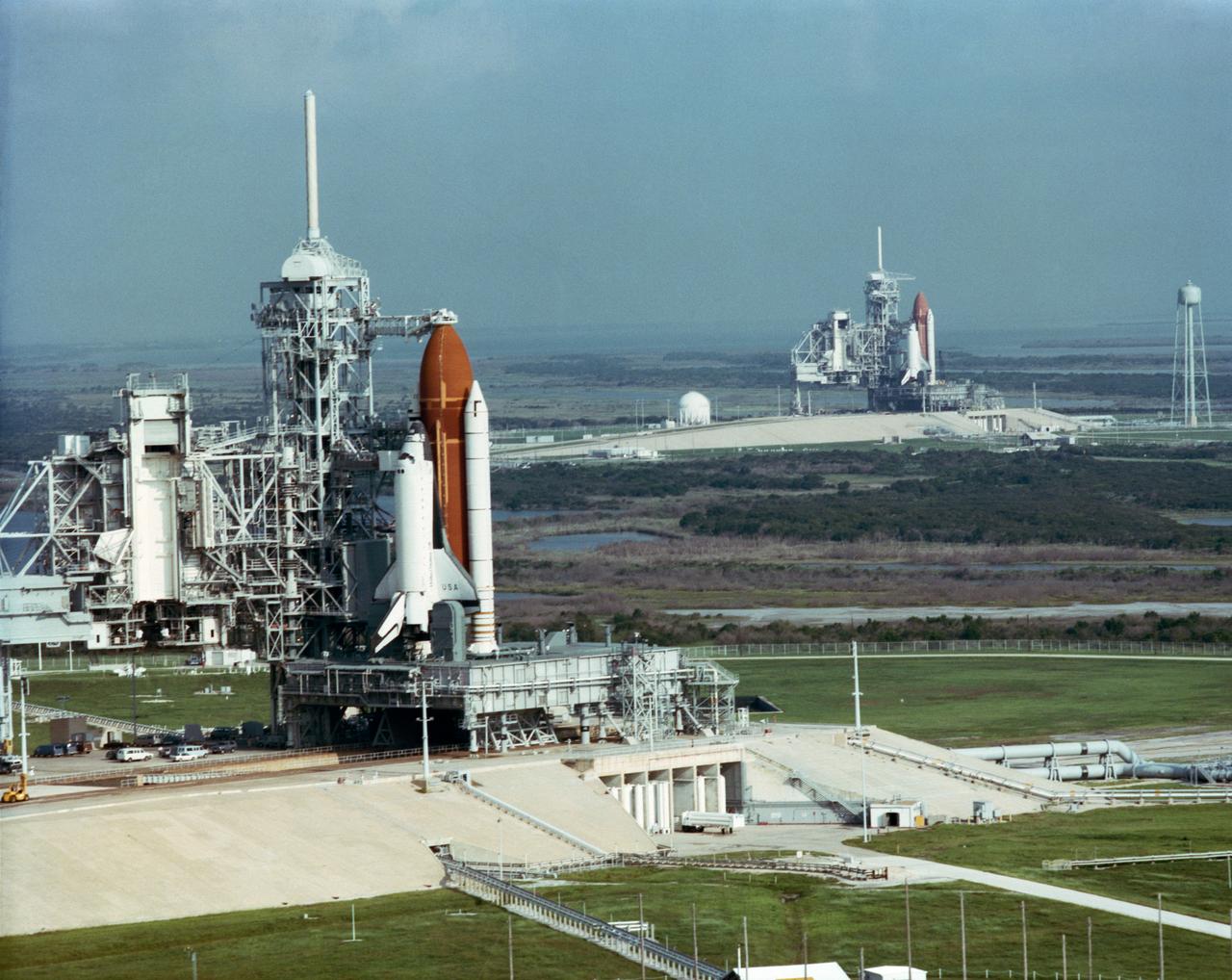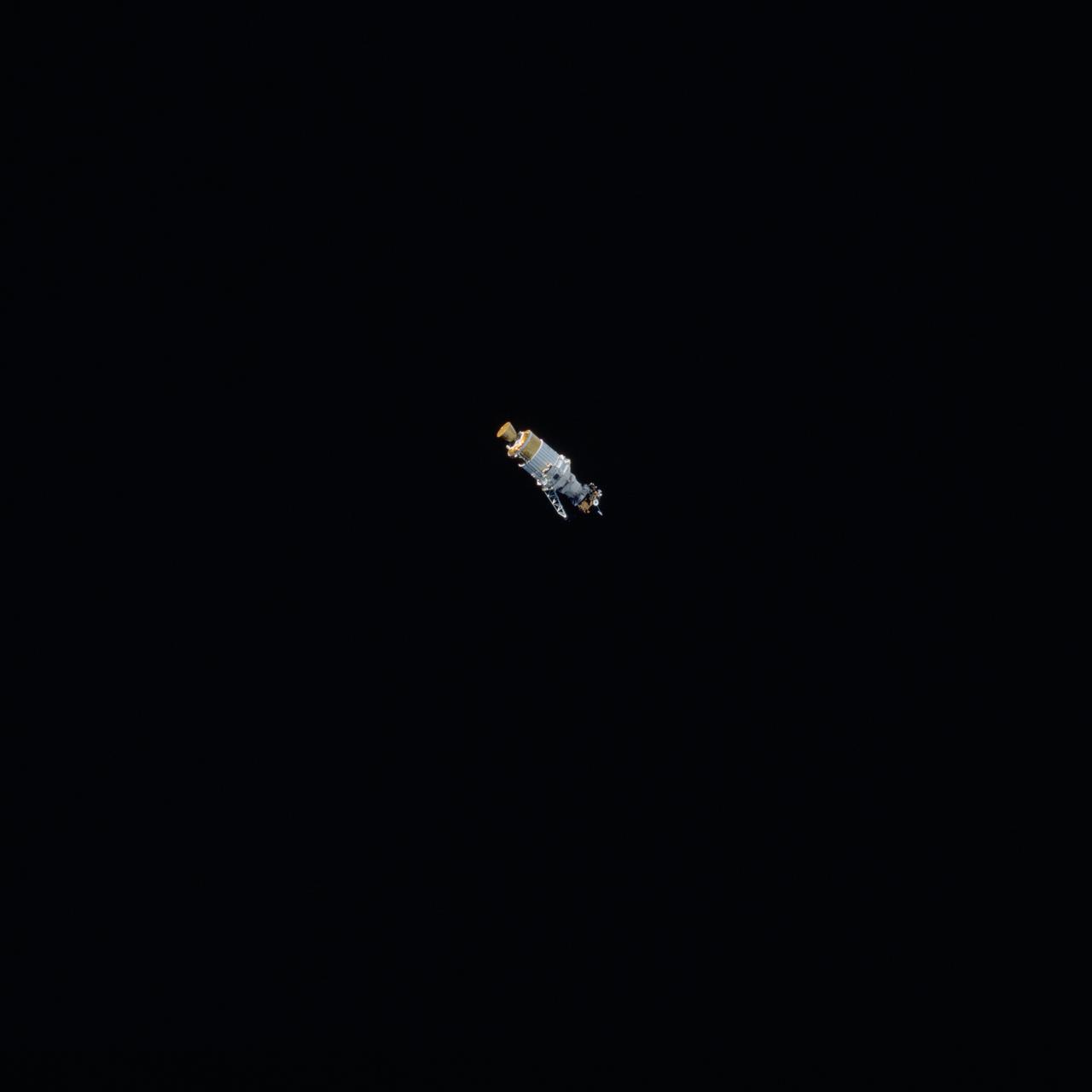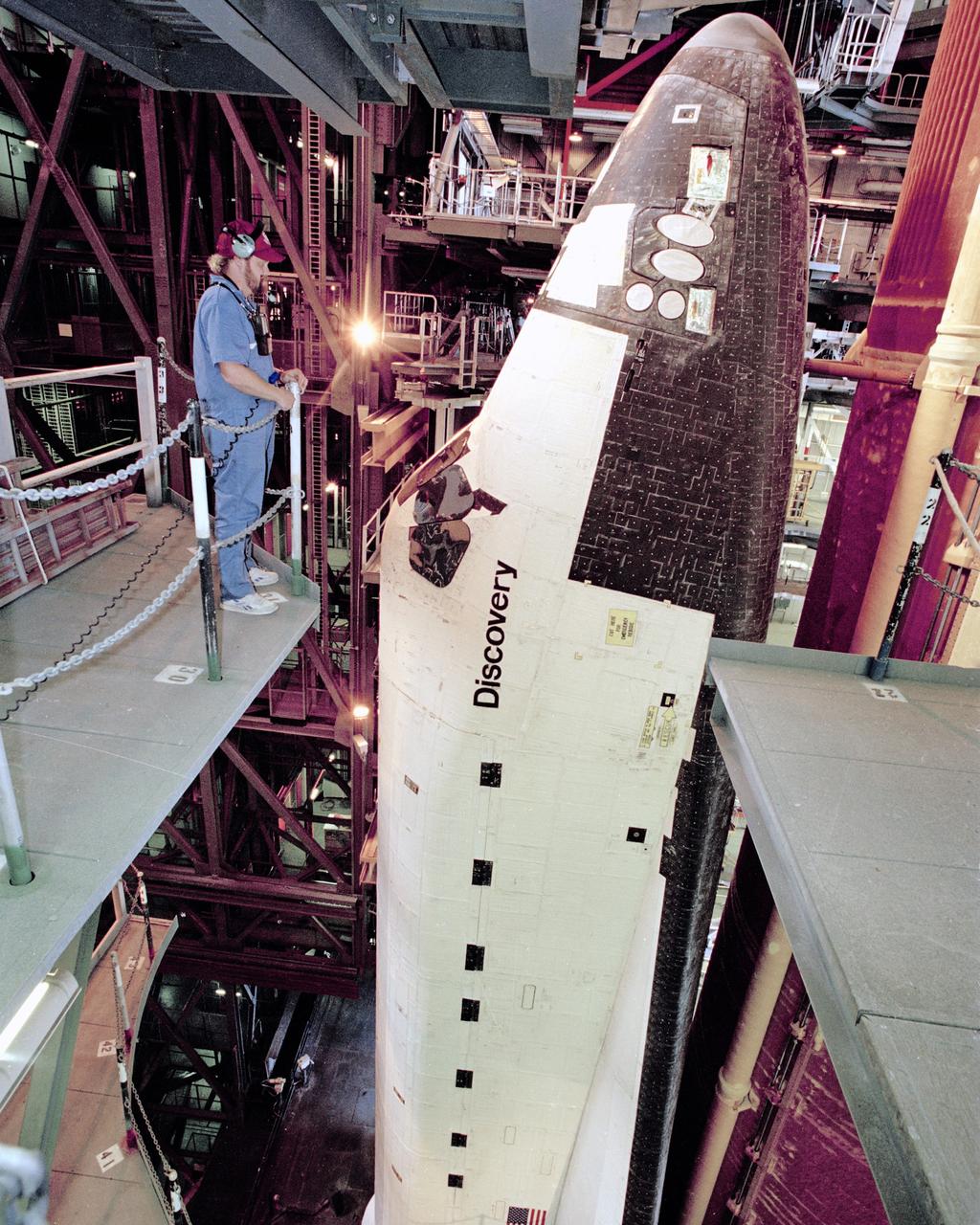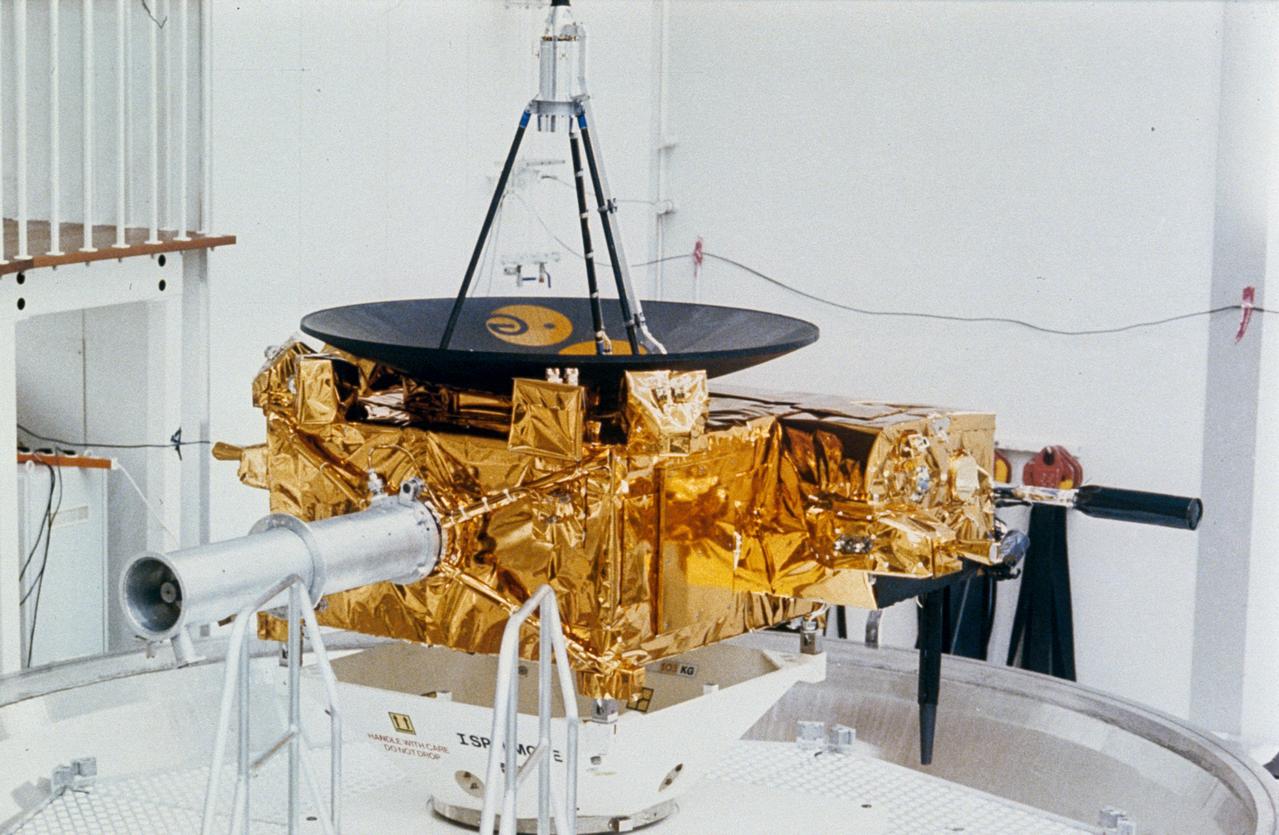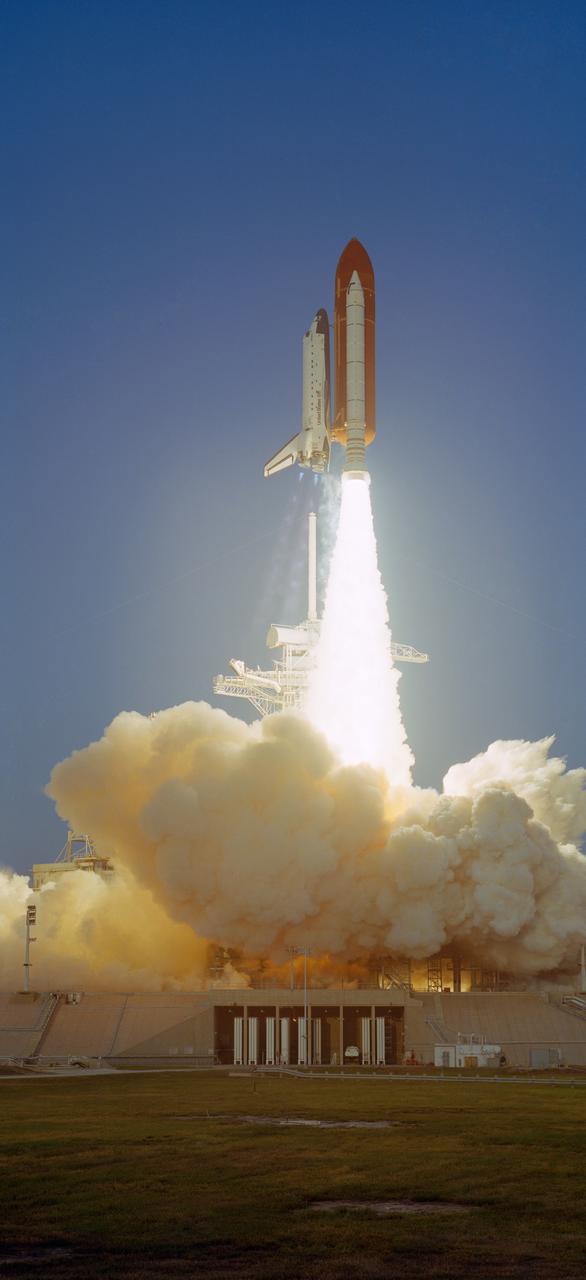STS-41 Fact Sheet
By Cliff Lethbridge

STS-41 — Discovery
36th Space Shuttle Mission
11th Flight of Discovery
Crew:
Richard N. Richards, Commander
Robert D. Cabana, Pilot
William M. Shepherd, Mission Specialist
Bruce E. Melnick, Mission Specialist
Thomas D. Akers, Mission Specialist
Orbiter Preparations:
Tow to Orbiter Processing Facility – May 8, 1990
Rollover to Vehicle Assembly Building – August 27, 1990
Rollout to Launch Pad 39B – September 4, 1990
Launch:
October 6, 1990 – 7:47:15 a.m. EDT. Launch was delayed about 12 minutes due to a combination of weather concerns during the T-9 minute hold, an 11-second hold at T-5 minutes due to a Ground Launch Sequencer glitch and a 22-second hold at T-31 seconds to correct an orbiter purge, vent and drain (PVD) system glitch.
Landing:
October 10, 1990 – 6:57:19 a.m. PDT at Runway 22, Edwards Air Force Base, California. Rollout distance was 8,532 feet. Rollout time was 49 seconds. Mission duration was 4 days, 2 hours, 10 minutes, 4 seconds. Landing occurred during the 66th orbit.
Mission Summary:
The Ulysses, a European Space Agency spacecraft designed to explore the polar regions of the sun, was deployed. For the first time, an Inertial Upper Stage (IUS) booster and a payload-specific Payload Assist Module-S (PAM-S) booster were combined on one spacecraft to send Ulysses toward the sun.
Other payloads included the Shuttle Solar Backscatter Ultraviolet (SSBUV) experiment, INTELSAT Solar Array Coupon (ISAC), Chromosome and Plant Cell Division Experiment (CHROMEX), Voice Command System (VCS), Solid Surface Combustion Experiment (SSCE), Investigations into Polymer Membrane Processing (IPMP), Physiological Systems Experiment (PSE), Radiation Monitoring Experiment III (RME III), SSIP and Air Force Maui Optical Site (AMOS) experiments.
SELECTED NASA PHOTOS FROM STS-41
